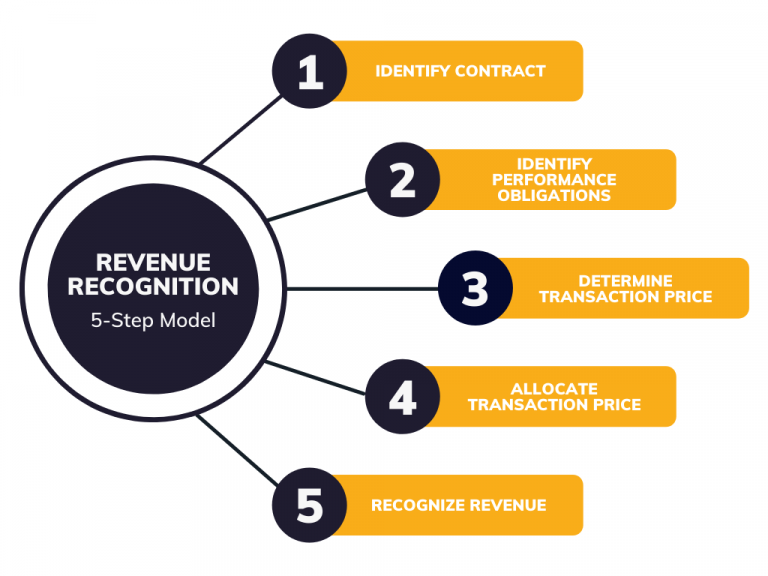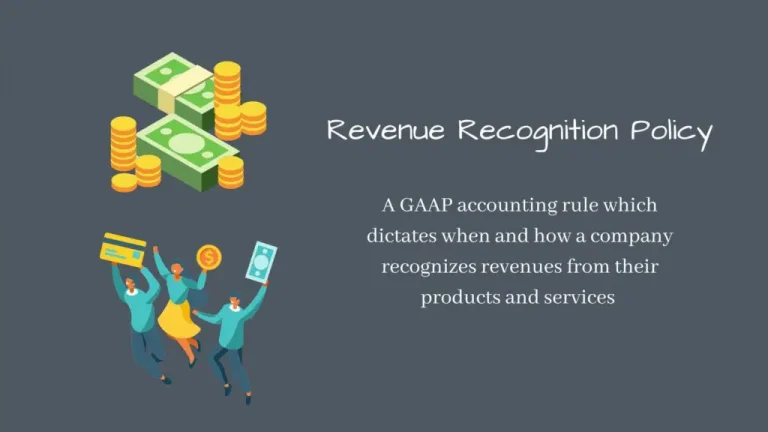The elusive ‘bottom line’ is the most important term in the ever-changing world of business. The term ‘bottom line’ refers to a company’s net income and is derived from its location at the bottom of a financial statement. The top line, which refers to a company’s reported gross figures, or revenue, is something we discuss less. A business is said to be producing top-line growth when its revenue recognition rises, and this growth is a crucial predictor of the business’s prospects in the marketplace. Additionally, businesses that utilize white label payment solutions must recognize and report their revenue in accordance with best accounting principles if they want to raise money.

obtain a loan, or boost their valuation. Accounting may not be the most attractive part of the business world, but it is unquestionably crucial to have a basic understanding of cash versus accrual. This information serves as the cornerstone for utilizing the revenue of recognition principles, which will ultimately increase your top line. However, what is exactly revenue of recognition? Continue reading to find out more about the basic principles of this system, how it is governed by US regulations, and how you may use it to meet performance goals and draw in investors.
What is revenue of recognition?
The process of documenting and reporting revenue inflows in a business’s financial accounts is known as revenue recognition. Based on the fulfillment of performance commitments, the transfer of control, and the amount that can be accurately quantified, it entails deciding when and how revenue recognition principles should be recognized. By ensuring that income is recognized accurately and on time, this accounting concept promotes openness and makes it possible for stakeholders to evaluate the financial performance of a business.
Revenue figures are the most important factor to consider when examining financial documents. To work with the right data for conducting business, your firm must ensure adequate and accurate revenue of recognition, measurement, and presentation. revenue recognition principles can be done in a number of ways, but not all of them work for every type of organization.
Revenue recognition 5 step model

A set of procedures known as recognition of Revenue recognition criteria helps businesses accurately record and disclose their income in financial statements. These procedures guarantee prompt and correct revenue
- Determine the customer’s contract: Specify requirements for entering into a contract with a client.
- Determine the contract’s performance obligations: Establish clear responsibilities in the contract.
- Find the price of the transaction: When determining the cost of goods or services, take certain criteria into account.
- Decide on the purchase price: Rules for allocating the cost among various commitments.
- Revenue is recognized as soon as the organization fulfills a performance obligation: Describe how revenue is recognized when commitments are met.
The old-fashioned single revenue model is becoming obsolete in today’s more complicated corporate environment. Companies now have to provide individualized and flexible options for pricing, billing, and monetization. The already difficult process of revenue recognition has gotten much more difficult as a result of evolving accounting rules and standards. Utilize a single revenue of recognition principles system to consolidate your income sources. Become compliant with the latest IFRS 15 and ASC 606 requirements. Get a thorough picture of your company’s revenue, both recognized and deferred, automate computations, and expedite your period-end close. recognition, fostering transparency and empowering stakeholders to evaluate a business’s financial performance.
Revenue recognition methods
Sales-based approach: When title passes to the buyer at the time of sale, revenue is recognized using the sales-basis method. This approach is frequently applied to transactions involving the sale of commodities, where revenue is recorded as soon as the buyer becomes the legitimate owner of the item. Because it synchronizes revenue recognition with ownership transfer, it offers a simple method for revenue recognition.
The completed-contract approach: At the conclusion of the contract, revenues and expenses are recorded using the completed-contract technique. For long-term projects when it is challenging to accurately predict the percentage of completion, this approach is usually employed. This method offers a more conservative approach to revenue recognition by only recognizing revenue and expenses upon contract completion.
Method of cost-recoverability: Profit recognition is postponed by the cost-recoverability technique until all project expenses have been reimbursed. This approach is frequently applied to projects where the recoverability of expenses is unknown. In order to prevent profit recognition until the project is judged financially feasible, revenue is only reported if all project expenditures have been recouped.
The method of percentage-of-completion: The percentage-of-completion technique, which is especially popular in long-term contracts, records income and expenses as a percentage of work accomplished. Using this approach, revenue and expenses are recorded in proportion to the percentage of work done as the project moves forward. This approach gives a more realistic picture of the project’s long-term financial success.
Method of installation: The installment approach is appropriate for transactions with erratic client collections since it records a proportionate profit upon installment receipt. Profit is recorded in proportion to the quantity of money received, and revenue is recorded as soon as the consumer makes a payment. When the collectability of payments is questionable, this approach enables more cautious revenue recognition.
Brokerage contract: A brokerage agreement complies with IRS and SEC regulations and proprietary rules for brokers. This approach specifies particular guidelines that brokers must adhere to while recording brokerage service revenue. It offers a uniform method of revenue recognition in the brokerage sector and guarantees adherence to tax and regulatory regulations.
The accrual method: Prepayments are first recorded as assets using the accrual technique, which then reclassifies them as expenses after the delivery and acceptance of goods or services. This approach more accurately depicts a company’s financial performance by matching revenue with the costs incurred to produce that revenue. Regardless of when money is received, it records revenue as soon as it is earned.
Method of appreciation: Real estate brokers can lower profits from selling properties at higher valuations by using the appreciation strategy. Revenue is recognized using this method in accordance with the property’s increasing value over time. It makes it possible to record income as the value of the property increases, giving a more realistic picture of the financial gain from the sale.
Method of proportional performance: The percentage-of-completion method for profit recognition is modified by the proportional performance method. Like the percentage-of-completion technique, it records revenue and expenses according to the percentage of performance that has been completed. This approach, however, bases profit recognition on the percentage of performance that is finished rather than the percentage of expenses incurred.
Method of deposit: Deposits covered by cancellation agreements are made using the deposit method. Although the deposit is recorded as a liability until the cancellation period has passed or the customer has met their commitments, revenue is recognized at the time of receipt through a modern payment gateway. By using this technique, revenue is kept from being recorded until it is absolutely assured that the deposit will not be refunded.
Deals Regarding Bill & Hold: The purpose of the bill and hold method is to stop fraudulent transactions that try to inflate a company’s assets. Even if the products are not delivered in person, revenue is recorded at the time of billing the consumer under this technique. Nonetheless, some requirements must be fulfilled, including the buyer’s request for the bill and hold arrangement, the products’ distinct identification, and their readiness for physical transfer.These different approaches give companies the freedom to recognize revenue according to the particulars of their transactions, guaranteeing accurate and trustworthy financial reporting.
Revenue recognition standard
ASC 606: The Financial Accounting Standards Board (FASB) established ASC 606, which regulates nonprofit organizations and both public and private businesses in the US.
IFRS 15: The International Sustainability Standards Board (ISSB) and the International Accounting Standards Board (IASB) established the global standard known as IFRS 15. 167 nations, or nearly all developed nations outside of the United States, have adopted IFRS standards.
Both standards aim to reduce complexity while promoting standardization and comparability. The criteria differ in a few ways, including non-cash considerations, specific contract costs, and sales that are not part of regular business operations.
Everything you need to understand the revenue recognition principles
A component of accrual accounting known as revenue recognition establishes the timing and method by which companies “recognize” or record their revenue. According to the idea, companies must record revenue in accrual accounting (when it is earned) as opposed to cash accounting (when payment is received). Companies follow this shared accounting approach because it gives accounting procedures stability and transparency, which helps them to accurately evaluate revenue and report it to shareholders, stakeholders, and regulatory agencies. Regulating organizations keep a close eye on how companies handle their books to make sure that everyone reports their earnings and losses according to the same rules.
The Financial Accounting Standards Board (FASB) in the US mandates revenue recognition as a standard practice or generally accepted accounting revenue recognition principles (GAAP). The International Accounting rules Board (IASB), which establishes accounting rules for publicly traded corporations in 144 countries, and the Financial Accounting Standards Board (FASB) collaborated to create unified regulation in 2014. (With the exception of the US, India, and China, the IASB regulates practices in all significant financial markets through the IFRS. Although it doesn’t follow every detail of IFRS, India has its own unique standard that overlaps with it.
Global accounting regulations used to be industry-specific, resulting in inconsistent and fragmented revenue recognition norms that were difficult to apply. Fairly comparing the standing and performance of businesses across industries became challenging as a result. In order to provide a new, common framework for recognizing revenue across industries and business models, the FASB and IASB collaborated to draft joint laws known as ASC 606 (in the US) and IFRS 15 (internationally). It matters to public, private, and nonprofit entities that sign agreements with clients to trade products and services. Adhering to accrual accounting is advantageous even for charitable organizations that must account for grants, government contracts, or recurrent donations.
Revenue recognition policy

A component of accrual accounting known as revenue of recognition establishes the timing and method by which companies “recognize” or record their revenue. According to the idea, companies must record revenue in accrual accounting (when it is earned) as opposed to cash accounting (when payment is received).
Revenue recognition criteria
Performance commitments: A promise to deliver a unique good or service to a client is known as a performance obligation. The timing of revenue recognition depends on the identification of performance commitments.
Allocation of transaction prices: Every performance obligation in a contract should receive a portion of the transaction price. This entails giving each part or rendered service a value.
Collectability: One essential condition for revenue of recognition is collectability.
Reliability: It is important to consistently recognize and report new revenue.
Rewards and risks: The buyer should take on the risks and benefits of ownership instead of the seller.
Manage: The products sold should no longer be under the seller’s control.
Measurability: Both revenue and expenses should be quantified in a reasonable way.
What is revenue recognition principles in accounting?
To revenue recognition principles, there are five broad Revenue recognition criteria that must be satisfied. The requirements for revenue recognition are as follows:
- The contract has been approved by the parties, who also pledge to uphold its terms. Approval can be given verbally or in writing, depending on how it is typically given.
- It is possible to identify each party’s rights to the products or services that will be transferred.
- The terms of payment are obvious and unambiguous.
- The contract’s future influence on the risk, timing, or volume of future cash flows indicates that it has commercial substance.
- It is considered likely that “substantially all” of the money owed for the transfer of the products or services will be paid.
It is important to note that revenue cannot be recognized unless all of these requirements are satisfied.
To sum up
In conclusion, a fundamental idea in accrual accounting that controls how and when companies record their income is revenue of recognition. For proper financial reporting and transparency, it guarantees that income is reported at the time of earning rather than when payment is received. ASC 606 and IFRS 15 are two examples of standards that offer a five-step paradigm to help businesses identify contracts, performance responsibilities, transaction pricing, and when to recognize revenue. Following these guidelines correctly enables businesses to present trustworthy financial data, which improves industry comparability and trust while drawing in investors by accurately representing economic performance.
Faqs
Under IFRS, how is revenue recognized?
Recognizing revenue after the customer has received and is able to use the products or services is the fundamental tenet of IFRS 15. Accordingly, revenue cannot be recorded until the product has been delivered and accepted by the customer at the agreed upon price.
Which four factors go into revenue recognition?
The following are the four prerequisites for revenue recognition:
- A two-party agreement
- The completion of a service or the delivery of a product
- Obtaining payment from the client
- Understanding that the anticipated financial gain has been realized
What is the significance of revenue recognition?
Accurate and transparent financial reporting is ensured by revenue recognition. It assists stakeholders in evaluating a business’s financial performance, which is crucial for obtaining financing, drawing in investors, and adhering to legal requirements.
Usually, when is revenue recognized?
When a business completes its performance responsibilities under a contract and the client takes possession of the goods or services, revenue is often recorded.
